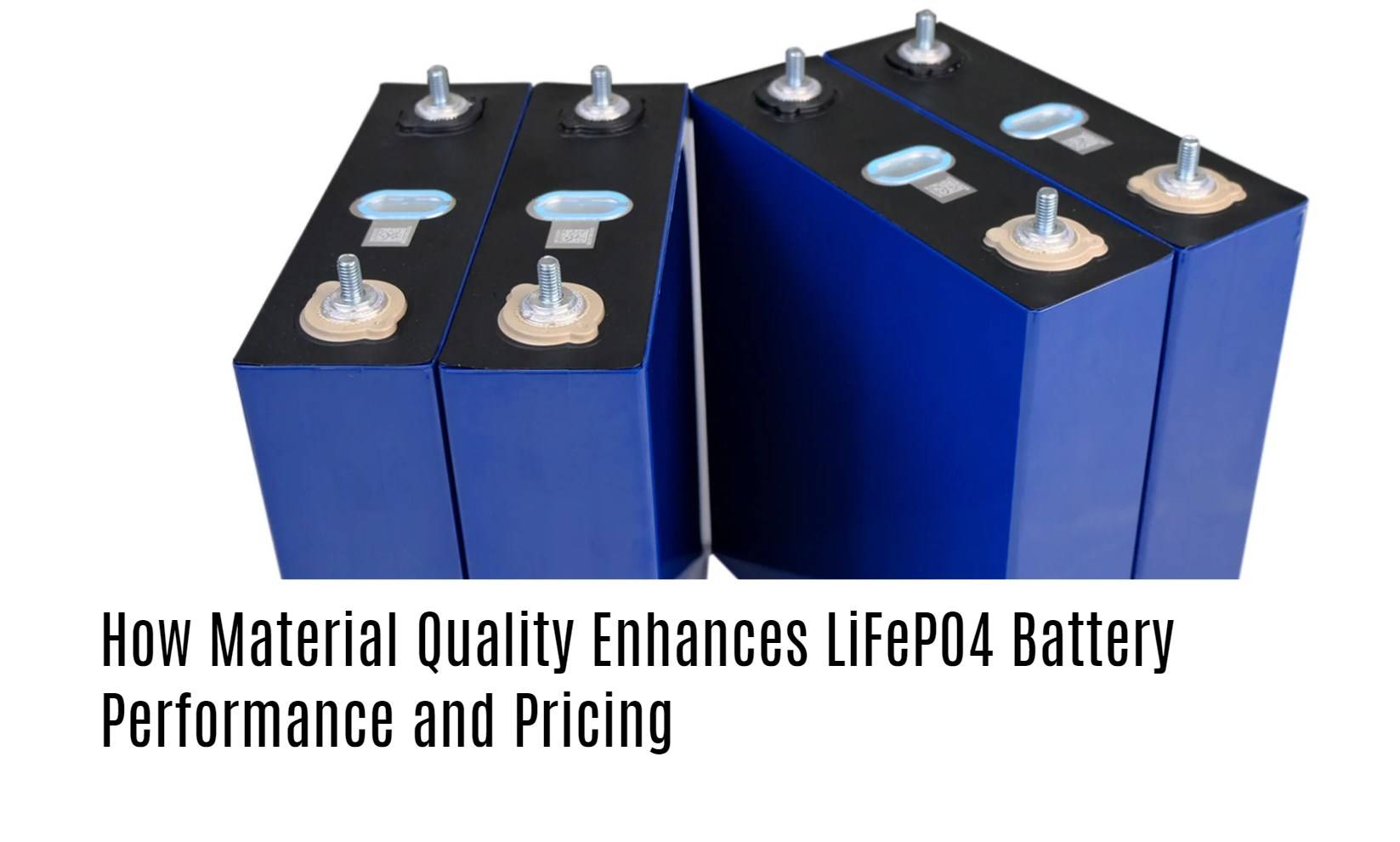In the rapidly advancing field of energy storage, Lithium Iron Phosphate (LiFePO4) batteries have garnered significant attention due to their outstanding performance, longevity, and safety features. Central to these benefits is the quality of the materials used in their construction. This article delves into how the quality of materials directly influences the performance and pricing of LiFePO4 batteries.
Superior Material Selection and Its Impact on Battery Performance
Enhanced Energy Density
The energy density of a battery, which refers to the amount of energy stored per unit volume, is a crucial factor in determining the efficiency of LiFePO4 batteries. High-quality materials contribute to higher energy density, allowing for more compact and lightweight battery designs. This is particularly advantageous in applications such as electric vehicles (EVs) and portable electronic devices, where space and weight are at a premium.
Extended Lifespan
LiFePO4 batteries are renowned for their long cycle life. This longevity is primarily attributed to the robust materials used in their construction. High-purity lithium and iron phosphates, devoid of impurities, reduce the degradation rate of the battery components. As a result, LiFePO4 batteries can endure thousands of charge-discharge cycles without significant capacity loss, making them a cost-effective solution over time.
Thermal Stability and Safety
Safety is a paramount concern in battery technology. The intrinsic thermal stability of LiFePO4 chemistry is further enhanced by the use of high-quality materials. Superior material quality minimizes the risks of thermal runaway and combustion, even under extreme conditions such as overcharging or physical damage. This makes LiFePO4 batteries a safer option for various applications, including grid storage and electric transportation.
Improved Charge and Discharge Efficiency
The efficiency of a battery during charge and discharge cycles is vital for its overall performance. High-quality electrode materials with optimized particle sizes and crystal structures ensure better ion conductivity and lower internal resistance. This results in faster charging times and more efficient energy transfer, enhancing the overall usability of LiFePO4 batteries in fast-paced applications.
Material Quality and Its Influence on Pricing
Initial Cost vs. Long-Term Savings
While the initial cost of high-quality materials for LiFePO4 batteries may be higher, the long-term benefits often outweigh these upfront expenses. Batteries constructed with superior materials offer extended lifespans and enhanced performance, reducing the need for frequent replacements. This translates into significant long-term savings for consumers and businesses alike.
Reduced Maintenance Costs
The durability and reliability of LiFePO4 batteries with high-quality materials lead to lower maintenance costs. These batteries require less frequent servicing and are less prone to failures. This aspect is particularly beneficial in industrial and commercial settings, where downtime and maintenance can incur substantial costs.
Scalability and Economies of Scale
As the demand for LiFePO4 batteries continues to grow, economies of scale play a crucial role in reducing prices. High-quality material production processes become more efficient with increased scale, driving down the cost per unit. This scalability enables manufacturers to offer competitively priced batteries without compromising on material quality.
Case Studies: Impact of Material Quality in Real-World Applications
Electric Vehicles
In the electric vehicle sector, the use of high-quality materials in LiFePO4 batteries has led to significant advancements. For instance, premium-grade cathode materials have enabled EVs to achieve longer driving ranges and shorter charging times. Moreover, the improved safety profile of these batteries has made them a preferred choice for many leading EV manufacturers.
Renewable Energy Storage
High-quality LiFePO4 batteries are also revolutionizing renewable energy storage. Solar and wind energy systems benefit immensely from the high cycle life and efficiency of these batteries. By ensuring consistent performance and reliability, high-quality materials help in stabilizing the grid and maximizing the utilization of renewable resources.
Consumer Electronics
In the realm of consumer electronics, the demand for compact, high-capacity batteries is ever-increasing. LiFePO4 batteries with superior materials offer an optimal solution, providing longer battery life and better performance in devices such as laptops, smartphones, and wearable technology.
Future Trends and Innovations in Material Quality
Advanced Material Research
Ongoing research into advanced materials promises to further enhance the performance of LiFePO4 batteries. Innovations such as nanotechnology and solid-state electrolytes hold the potential to increase energy density, improve safety, and reduce costs. These advancements will continue to elevate the standards of material quality in battery manufacturing.
Sustainable Material Sourcing
As environmental concerns take center stage, the sourcing of sustainable and ethically produced materials is becoming a priority. Companies are increasingly investing in eco-friendly mining and recycling processes to obtain high-quality raw materials for LiFePO4 batteries. This not only improves the environmental footprint of the batteries but also ensures a stable supply chain.
Integration with Smart Technologies
The integration of smart technologies with high-quality LiFePO4 batteries is paving the way for smarter energy management systems. Advanced battery management systems (BMS) enhance the performance and lifespan of the batteries by monitoring and optimizing their operation. This synergy between material quality and smart technology is set to revolutionize various sectors, from smart grids to electric transportation.
Conclusion
The quality of materials used in LiFePO4 batteries is a pivotal factor that determines their performance, safety, and cost-effectiveness. High-quality materials enhance energy density, lifespan, and thermal stability, making these batteries a superior choice for a wide range of applications. While the initial cost may be higher, the long-term benefits and reduced maintenance costs provide significant value. As advancements in material research and sustainable sourcing continue, the future of LiFePO4 batteries looks promising, offering even greater performance and affordability.




